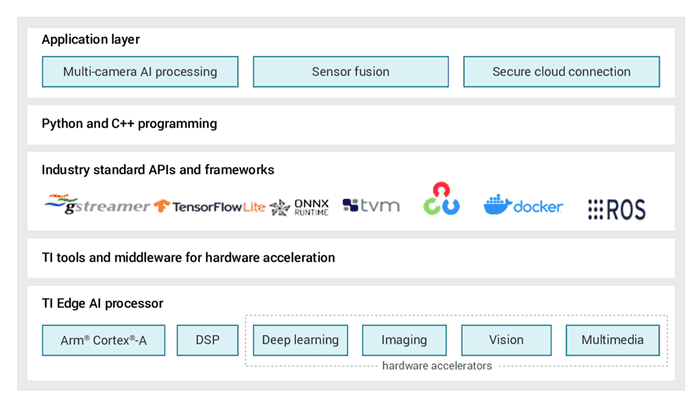SPRACZ2 August 2022 TDA4VM , TDA4VM-Q1
ADVANCE INFORMATION
2.3 Software programming
TI’s Edge AI starter kit come with a comprehensive edge AI software architecture that enables developers to do application development completely in Python or C++ language. There is no need to learn any special language to take advantage of the performance and energy efficiency of the deep learning accelerator with the TDA4x SoC processor.
Figure 2-6 below shows the comprehensive software offering from TI for the edgeAI applications. With strong and robust Linux foundation, developers can program the device with popular open-source frameworks such as, Tensorflow lite, ONNX, and TVM. Figure 2-6 shows the software architecture used for edge AI application development.
 Figure 2-6 Easy to use complete software
for easy AI application development
Figure 2-6 Easy to use complete software
for easy AI application development